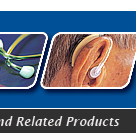|
Assistive Listening Devices
Reviews & Information
What Are They?
Assistive Listening Devices ( ALDs) are devices
which help patients with mild to severe hearing disabilities, listen to
particular or general sounds in varying sound atmospheres with or without
hearing aids.
Hearing aids are Assistive Listening Devices but all
Assistive Listening Devices are not disability specific. Several ALDs are
manufactured by surveillance instrument manufacturers like door alarms and
other sound specific alarm security systems. For students with hearing
deficiencies, a number of assistive listening devices to help focus on
the teacher or lecturer are available. The speaker has a microphone attached to
clothing which transmits sound with or without wires to a receiver connected to
the student. Many educative ALDs have transmitters that use FM radio waves to
transmit sounds to the students. Others use induction loops or electromagnetic
waves for transmission of sound. Wall and ceiling mounted amplifiers are also
available for transmitting sounds to the hearing impaired in group or education
atmospheres. Personal Assistive Listening Devices are also available for
assisting as well as ensuring safety for the personal use of those with mild
hearing impairment. Different kinds of door and intrusion alarms are available
for the security of the patient. Earphones with amplifiers for TV viewing and
sound showers that consist of over the head microphones help the hearing
impaired watch television without being a nuisance to others. ALDS like
telephones with amplifiers telephone usage easy for the hearing impaired.
Induction loops are also available to help those who use telecoil fitted hearing
aids to communicate through the telephone more effectively. Thus Assistive
listening devices help the hearing impaired patient enjoy a physically and
socially conscious listening environment.
Top Assistive Listening Devices Offers: Updated |
Learn More: Hearing Aid Batteries




